About YANBARU
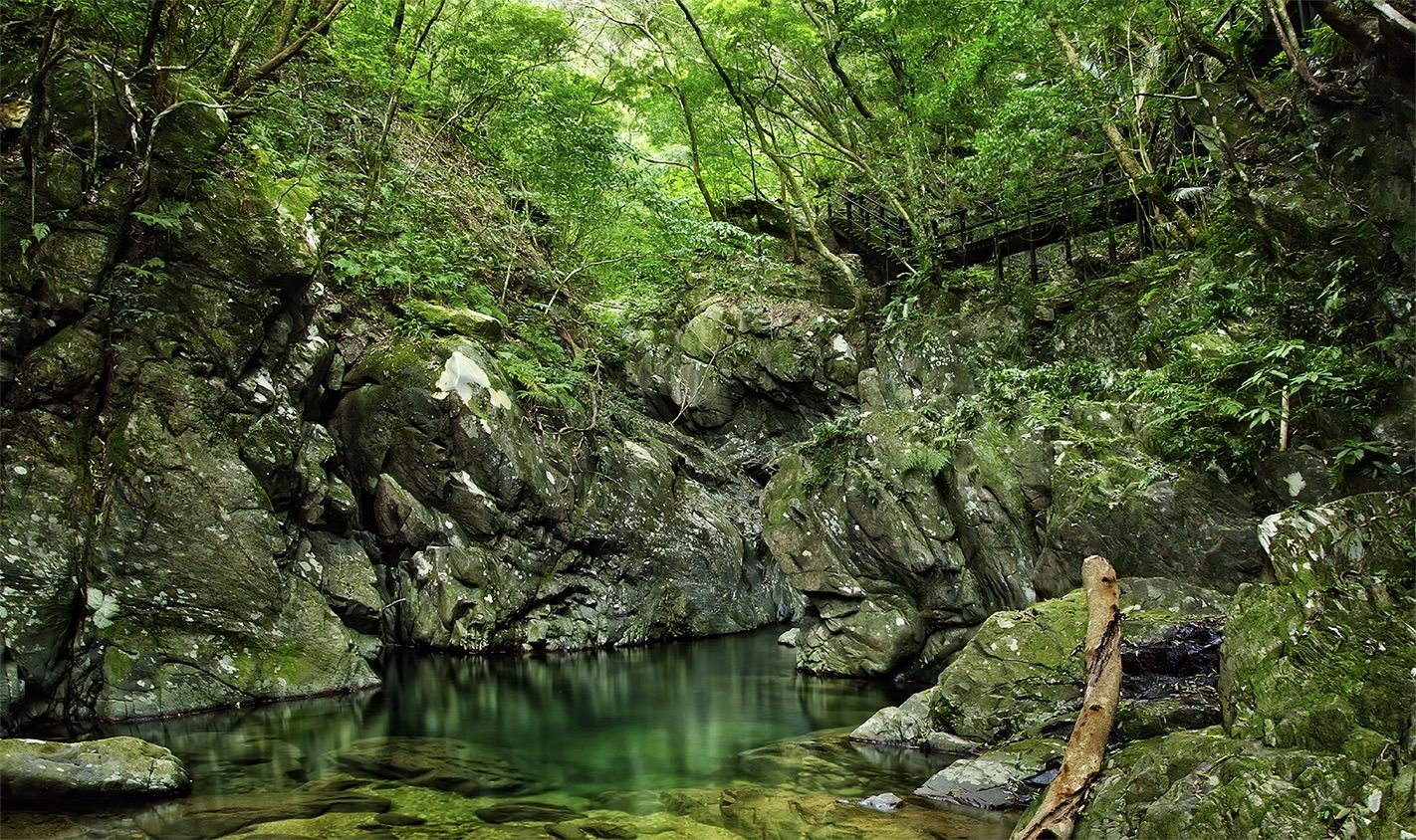


Kunigami Village is in the Yanbaru area with its green mountains and blue sea and Kunigami’s name conjures its climate and its culture where pryer’s woodpecker(Okinawa woodpecker=noguch gera) and Okinawa rail(Yanbaru-Kuina) which are two birds designated as national nature treasure live. We have programs that liaise with the local inhabitants so the visitors can enjoy the real nature and the fields connected to it. The subtropical canoe trips let the visitor enjoy birds watching where the wild bird lives while walking with the tour guide and experiencing the forests, an experience which you cannot find anywhere else.
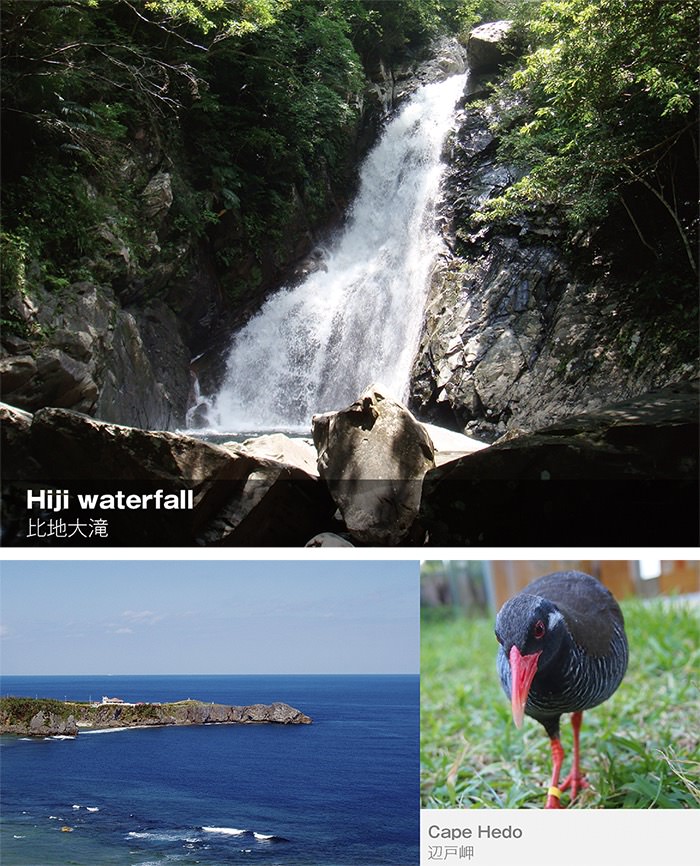
Cape Hedo Okinawa’s most northern cape where the waves of the Pacific Ocean and the East China Sea meet and where one can see Kagoshima’s Yoron Island in the horizon from the steep cliffs therefore getting its reputation as the place where one returns to their home country. The “Okinawa rail Forest” set up as an ecological learning facility is for is known for its bird that cannot fly where one can see the ecology where the national natural treasure the “Okinawa rail” lives. Observing the birds in its natural habitat allows for a great experience of the ecology and the conservation.
is located at Okinawa Prefecture, Kunigami County, Kunigami Village Okuma 1605.

Ogimi Village is known for health advertised as “Japan’s longest life village” along with it self reliance strong community where the people live long lives naturally. The village is surrounded by nature where the food culture originates and leading to the balanced lifestyle better known as “the Longevity home”. More recently, A tv-program has showed that the shekwasha citrus lemons contains the cancer fighting agent “nobiletin” thus gaining a nationwide reputation. Moreover, the village upholds the concepts of “meet the locals”, “connect to the culture”, “enjoy the richness” and“walk in Ogimi Village” relating to “longevity”, “abaca cloth home”, “shekwasha citrus lemons” and “Bunagaya home” on which the program with its different activities is based on the four.
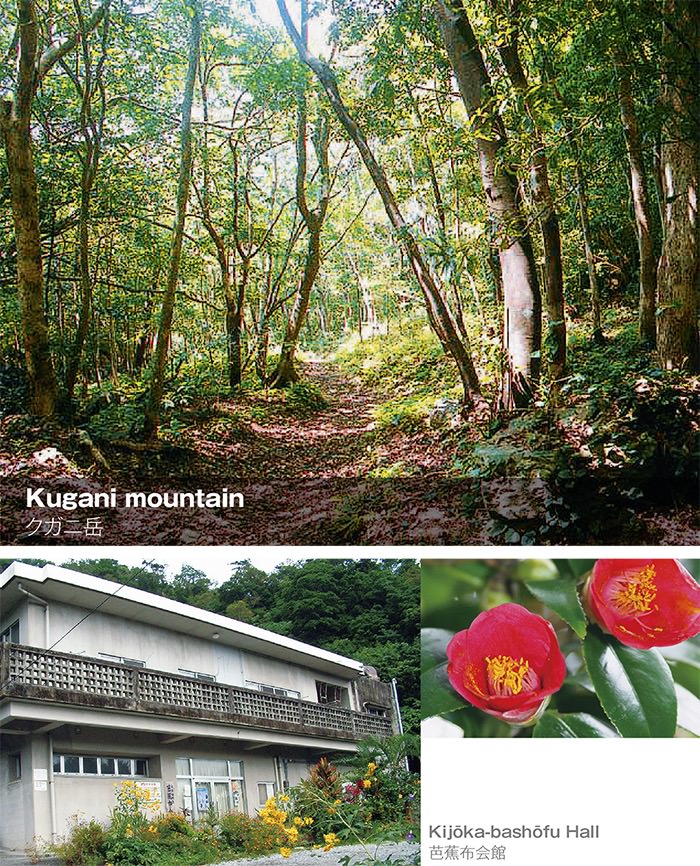
This a facility set as a research center for traditional abaca cloth craftsmen, an exhibition for goods and as a meeting place. It is a place where one can experience the “Kijoka abaca cloth” designated as an important intangible national treasure.

Higashi Village is located on the east coast in the north part of Okinawa’s Main Island. It is the seven largest by surface area in the prefecture but it mainly consists of hills and mountains with many rivers originating in the mountains making an area rich in dams. Pineapples are farmed in the scarce but suitable flat areas. The area boast the largest mangroves area in the island, Hirugi Forest Of Gesashi Bay, make it look a subtropical region and a valuable asset for the island. Higashi Village advances tourism based on “Co-existing with nature” and “interacting with society” as a way of investment in the abundant nature. The area offers programs for the tourists to mainly experience first hand nature’s ecotourism, fishing industry’s blue tourism and the agriculture’s green tourism.
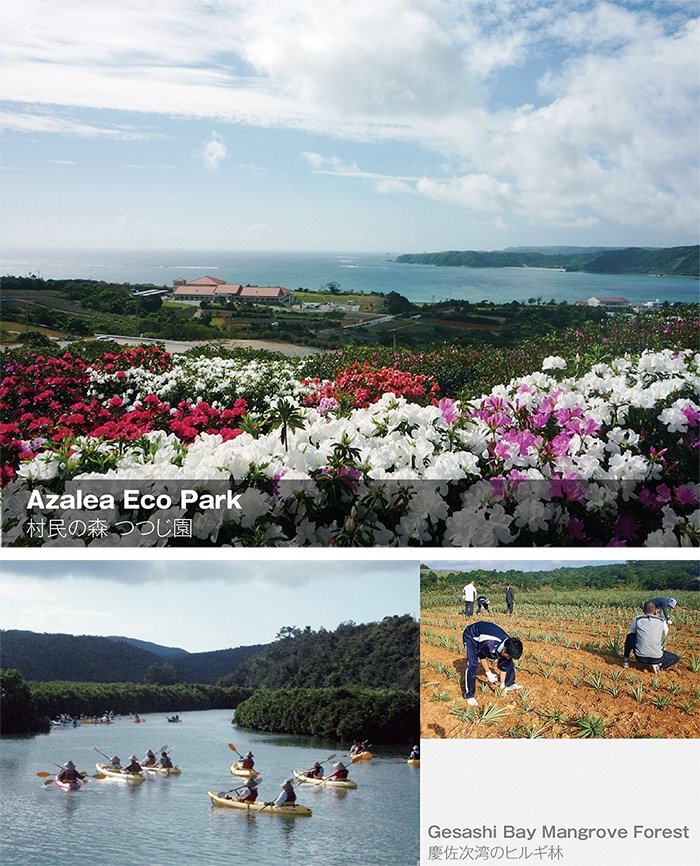
This is the best know forest on Okinawa’s main Island. There are three kinds of hirugi trees, and Yaeyama hirugi is the northern limit. It is a designated natural treasure.

Nago City has always been knows as a scenic place rich in its natural surroundings and is considered the hometown by its residents. Nago City encompasses Nago Bay, Hanejinaikai and the deep blue Pacific Ocean, one on each side. The city has various businesses helping the advancement and the well being of its residents by exploiting its rich surrounding nature that includes tourism, agriculture, and the fishing industry. It advances positive and assertive interaction and participation as well as clear information in order to achieve a wonderful town.
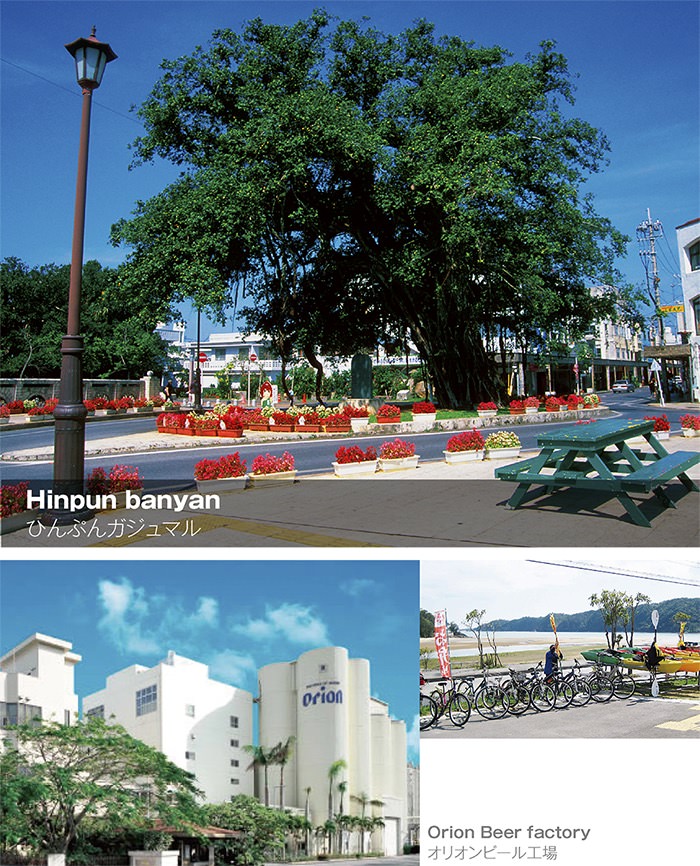
was build as the number one ideal environment in the prefecture and the beer, it produces is sent daily fresh to subtropical Okinawa where it is met with great joy.

Nakijin Village is located on the north side of Okinawa’s main island and the north eastern part of 1.5 km sandwiched between the sea is famous as the birth place om man kind. It used to be called “Kori” but has been called “Kori Oohashi” since February 2005. At the time when the Ryukyu Kingdom was established and during “the Three Kingdoms (Sanzan) Period” which included the North Mountain(Hokuzan), the Middle Mountain(Chuzan) and the South Mountain(Nanzan), the North Mountain King built a castle at Nakijin Village and established the Amami area in the areas north of “Kin Town”. Nakijin Village is currently a world heritage site. It is famous for Hikanzakura which is a type of cherry blossom tree and the “Ranzan Mountain” and Nakaharababa or Nakahara Horse Riding Ground in “Ryukyu Matsunami”, as well as Untenko Port known from a long time as the gateway to Izena Island and Iheya Island.
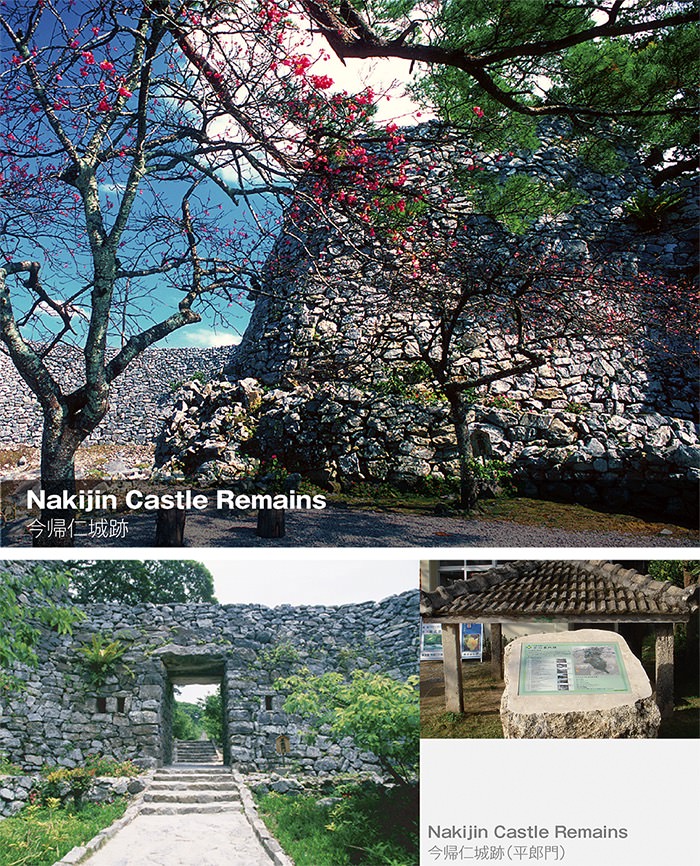
The North Mountain was the seat castle for the king during the Sanzan Period before the unification of the Ryukyu Middle Mountain. Nine ruins sites in Nakijin Village were listed as a world heritage site in 2000 under the name “Ryukyu Kingdom Gusuku and related heritage sites”. Sakura Festival is held every year from the beginnings until around the end of January with illumination at night.

The theme of Motobu Town is “sun, sea and greenery”. The first Japanese cherry blossom festivals are held here and the town is famous for having the world’s biggest aquarium, Okinawa Chuuraumi Aquarium. It started in 2006 by making a quasi-national park in Karusto area on the main island followed by Bise’s Fukugi Street and Minan Beach and Seso Beach making a beautiful landscape rich with nature. Motobu Town is also known as the soba noodles town with many soba restaurants that one should try. There are also many cafes which have become a popular driving area for the locals.
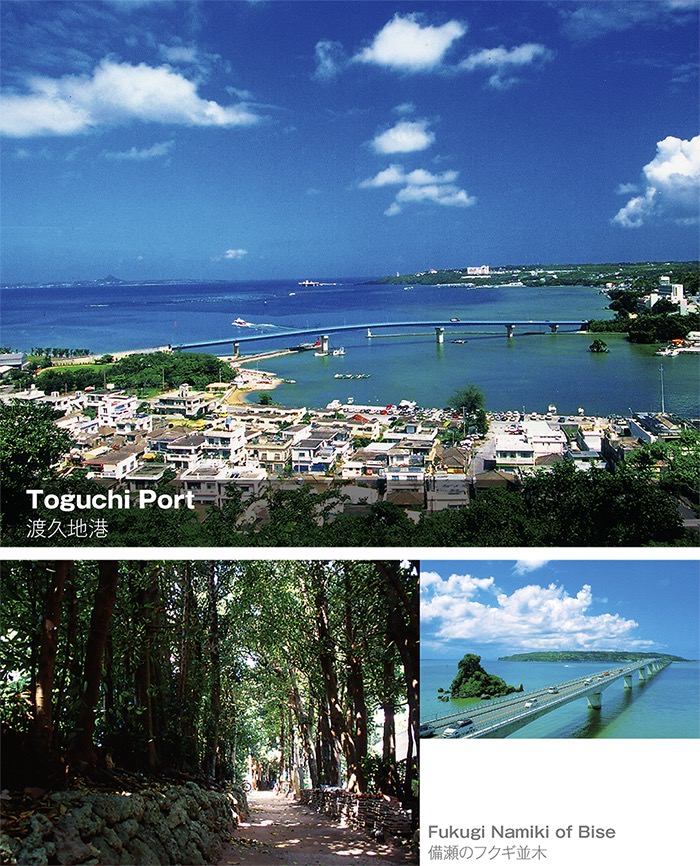
Sun and horizon full with sun! Quiet music of the breeze at times as well as the passing the times quietly just like the local Okinawan children do.

The remains of the road lined by accommodation places which built by the administration of the Ryukyu Kingdom are strewn along Route 58 which passes along the side of the forest. The road was resurrected as a historical road and it brings to mind the Kaizuka period with its Nakadomari ruins. It is a historical landmark that this was once a prosperous land with many famous places left until now. The coast inside the village was declared as the Okinawa National Park after its restoration and has developed into Japan’s number one subtropical resort dotted with large scale hotels and golf courses. It also offers the chance to experience the food, the traditional art performances, culture, traditional handicrafts, farming, the sea and other enjoyments.
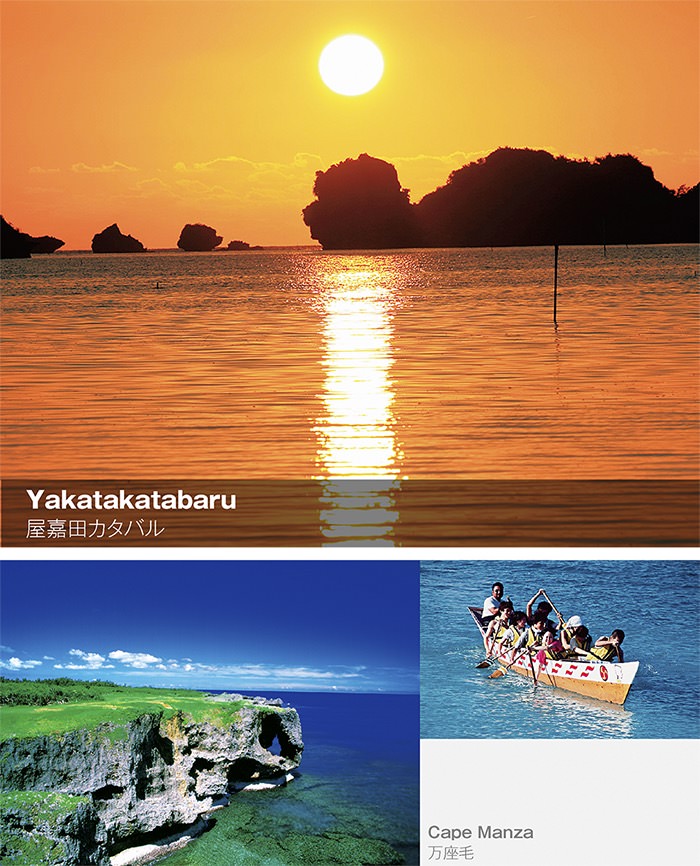
which is an exceptional view of the sea from the cliffs along the coast.There are souvenir shops and public toilets.

Ginoza Village is 55 km north of Naha City and takes about 1 hour overlooking the Pacific Ocean in the east. Ginoza Village has 5 dams with the slogan “ the water, greenery and sun” as a base for the town development. The town focuses on agriculture, and on health sports exploiting the marine industry. Kannan Dam is a good place for families to hang out and is known as “Kanna-thalasso Okinawa” the home of thalassotherapy facilities which uses sea water. Visitors can try “buoy fishing”, buoy an sea kayak under the supervision of the local fishermen.
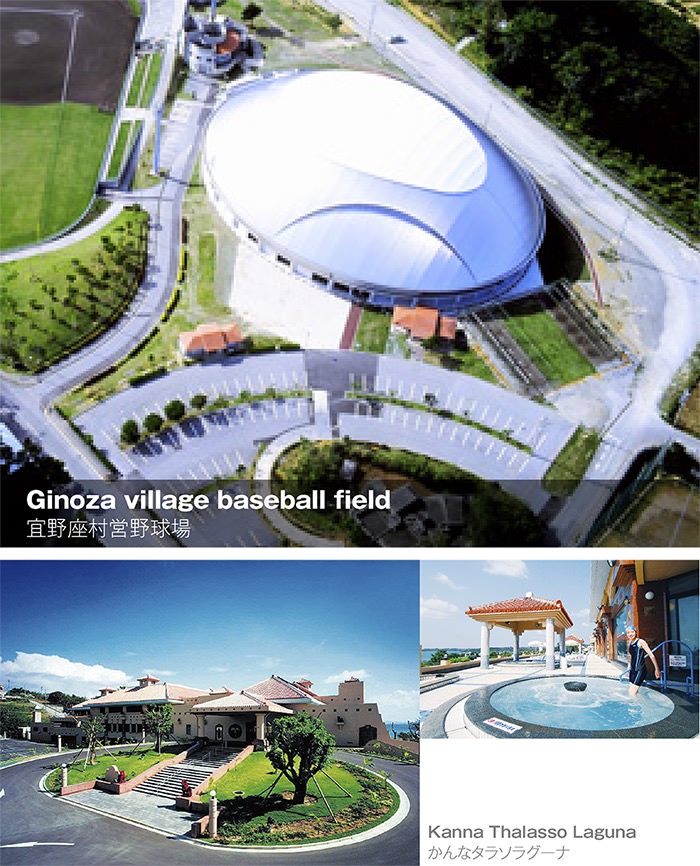
Thalassotherapy is defined as “a heath treatment method which uses the three elements of sea water, sea weed and sea mud found in the sea”. It is a method using the natural resources of the sea along with comfortable amenities the beautiful natural marine lives.

Kin Town is located on the Ryukyu limestone and has been known for being rich in its underground water reserves. Kin River and Kintagaa River form a horizontal well and have been used as a valuable water resource by the local for a long time. Kin River was chosen as one of the best 100 sightseeing spots in Okinawa. Taco rice is Kin’s famous local food and is well known all over the prefecture. It originated here in 1984 and it is known as Okinawa people’s soul food.
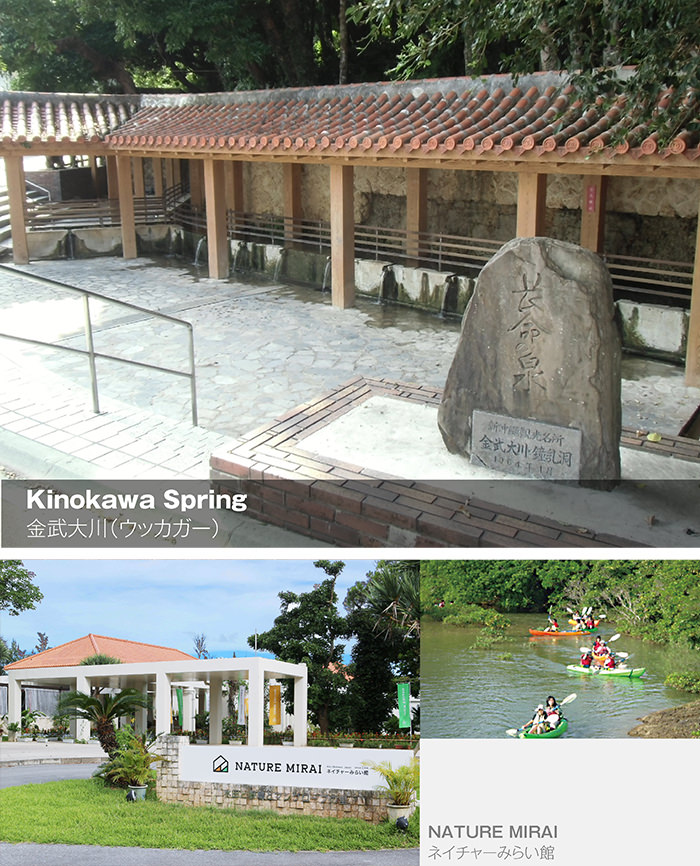
Kin Town is a land surrounded by nature’s future, the sea, the rivers, and the fields and boast accommodation facilities rarely seen in the prefecture geared for experiencing the natural environment. This a town overflowing with traditions, history, nature and people.

Ie Island is to the north of Okinawa’s main island floating in the sea some 9 km northwest of the main island with a surface of 22.77k㎡. It is famous for Iejima Tatchu Mountain standing at 172 meters high(Gusukuyama) with it special scenery. Easter lilies make a huge carpet in spring with 100 kinds of hibiscus and other flowers blooming all year round makes is a warm subtropical island where the seasons are marked by the flowers. Ie Island lures the visitors with its abundant nature and its glowing blue coral reefs. Come to Iejima, the Island of the setting sun and the romantic flowers land.
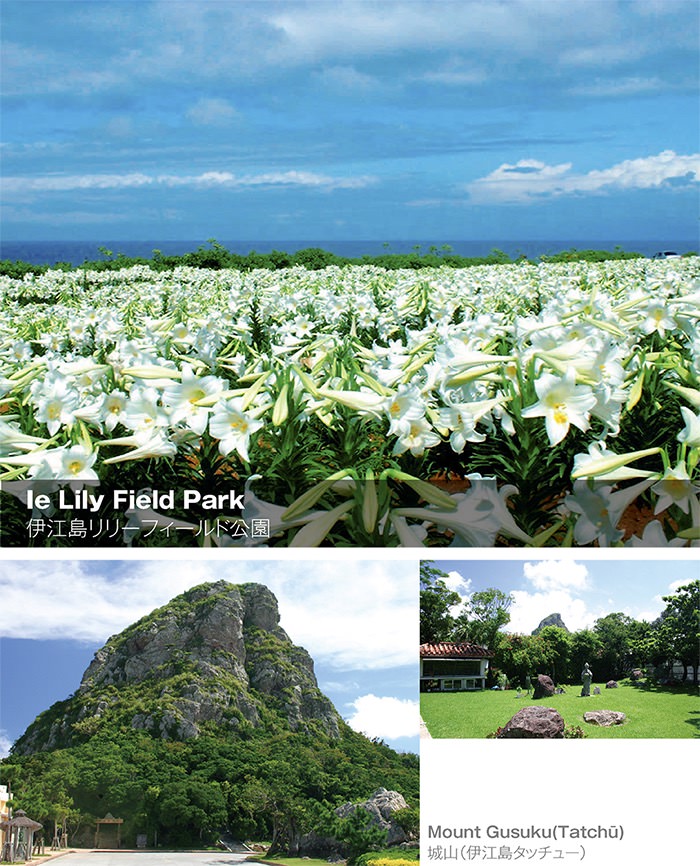
This is a rock mountain located in the east of the island with an altitude of 172 m. It is known as Iejima Tatchu Mountain.

Iheya Village is a narrow long island located in the most northern part of Okinawa. It consists of green mountains exceeding 200 meters in height with wide plains transformed into fields. It has coral reefs that extend into the horizon with endless sand beaches and a clear emerald green sea making Iheya Village a lucky town surrounded by mountains and by the sea. Its reputation as a diverse island with unmatched nature and rich history has gone sky high in travel news recently and has quickly became a center for marine activities. It is now the focal point for chartered fishing boats in Okinawa Prefecture. It is ideal for buoy fishing, reel fishing and trolling fishing.
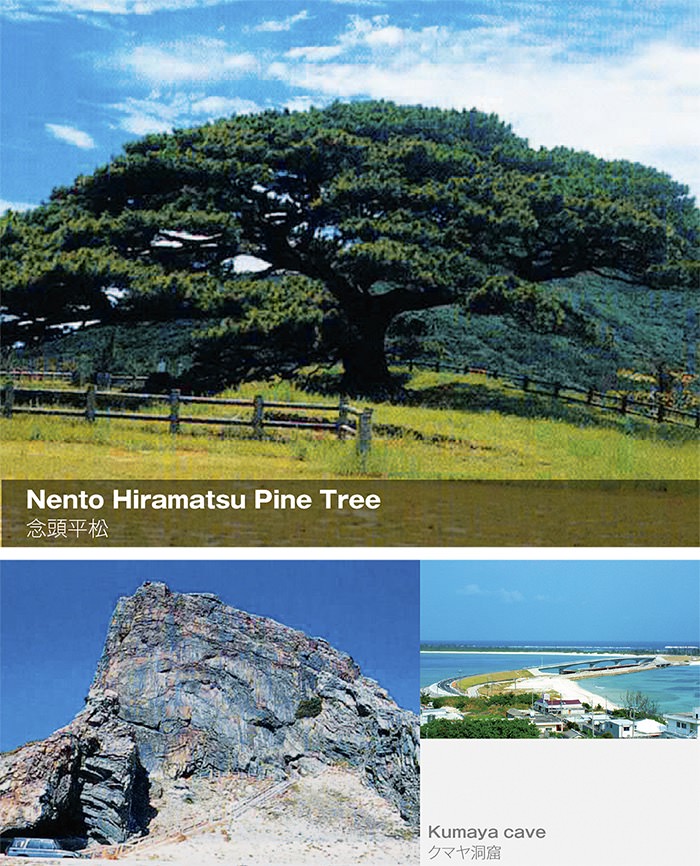
Kumaya Cave is located in the north of the island. It is known as the top of the world in traditional stories. The cave extends grows higher right after entering it and the locals consider Mt. Otake a sacred place.

Izena Village is surrounded with cobalt green sea where schools of fish swim around coral reefs making the surroundings for Izena Island. Moreover, King Sho En who became the first ancestor of the Daini-shoshi of the Ryukyu Kingdom lived on Izena island, a fact know on the island and beyond it with many historical ruins related to this very fact. The island boasts programs for experiencing firsthand the nature, the history and the marine leisure activities along with the local residents. The population is about 1700 people and the tiny island barely covers 15.42h with diving facilities but no hub makes it a safe and great place for watching the starry skies and for strolling in the mountains. “Enjoy Izena Island cycling and sightseeing”!
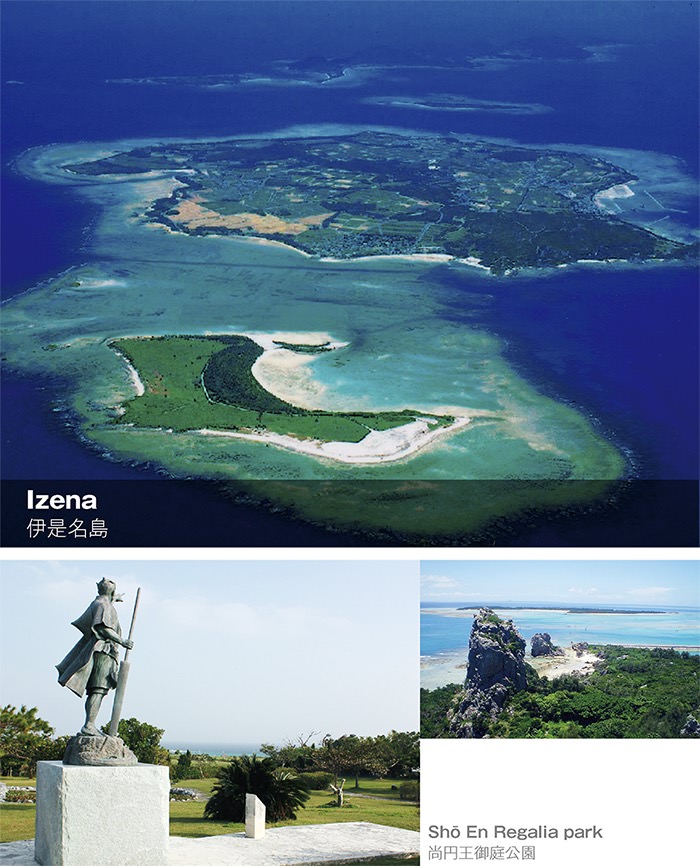
The garden commemorates the 580th anniversary of Sho En and was declared as a connected plot in 1996.